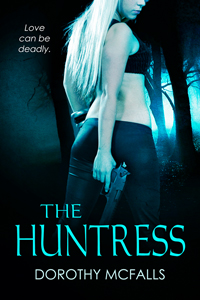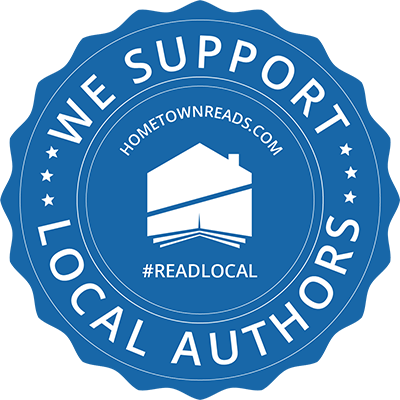We’re so excited to have Dorothy McFalls as our guest today! 🙂 Dorothy, thank you, for sharing these wonderful tips on writing a great synopsis with us.

Dorothy St. James is the author of the White House Gardener Mystery series for Berkley Prime Crime. The Scarlet Pepper, the second book in the series, was released in April 2012. Dorothy also writes romance as Dorothy McFalls. The Huntress, an independently-published kick-ass romantic suspense, recently climbed the Amazon bestseller list, hitting #4 in romantic suspense. You can find Dorothy at www.DorothyStJames.com or www.DorothyMcFalls.com or on Facebook (www.facebook.com/dorothystjames) or on Twitter (@DorothyStJames). Other books by Dorothy McFalls include The Nude, The Marriage List, A Wizard For Christmas, and Neptune’s Lair. Visit Dorothy’s website to see a complete list of her novels.
A couple of weeks ago I was invited to attend an impromptu writing retreat with three other amazing authors. One of those authors also happens to be an acquiring editor. As we were talking, she mentioned how surprised she was at the poor quality of many of the synopses she receives with the submissions. She couldn’t understand why authors didn’t spend more time on writing a synopsis when it is one of the major elements editorial staffs look at when deciding whether to buy a project or not.
I have to admit that I used to struggle with writing a synopsis. The end result was often dull. Flat. And it, quite frankly, bored me to death. That was before I learned what I was doing wrong.
Your synopsis is not a summary of your book. Yes, the synopsis should contain a beginning, middle, and end. But don’t simply state what happened in your story. Don’t write an outline. First, that’s boring. Second, it doesn’t demonstrate to the editor how incredibly talented you are.
Your synopsis is an advertising tool to sell your book. This is especially true if you are hoping to sell on proposal (in other words—convince a publisher to pay you money for a book you haven’t yet written.)
Not only should the synopsis tell the editor about your book, you also want it to:
- showcase your unique voice,
- represent the genre you are writing, and
- make the editor excited about the story (so she buys it!)
The synopsis should match the tone of your book. If you’re writing a comedy, make the synopsis funny. If it’s a thriller, write it so the editor is on the edge of her seat when she’s reading the synopsis. If it’s a sexy romance, make the synopsis sexy. Let the editor know when the hero and heroine kiss and more. (I was forever leaving out the first kiss and deepening relationship details in my synopses for my romance novels. And, consequently, I didn’t sell a book until a writer friend insisted I add that to my synopsis. Remember: the synopsis is a tool for selling your book.)
Most novels are written using a three-act structure (whether the author knows she’s doing it or not.) So why not use the three-act structure to write your synopsis?
Act 1: The Beginning:
Just like in your book, start with an interesting hook. For my latest cozy mystery release, The Scarlet Pepper (a book that sold based on its synopsis), I opened the synopsis with:
Someone is tampering with the Presidential vegetable garden, and Casey Calhoun, organic gardener for the White House, is determined to track down the garden prankster. Red peppers are growing instead of the green ones that had been planted. There’s cabbage where the First Lady’s favorite variety of lettuce should be. And all the tomato plants are gone.
From this opening paragraph you know (1) who the main character is, (2) there’s a mystery to be solved, and (3) that the story will be light-hearted in tone.
Because your synopsis isn’t a summary or outline of the book, it doesn’t have to open where the book opens. Open the synopsis by introducing your main characters and the story problem.
Act 2: The Middle:
What are the major turning points in your story? What problems does your hapless hero face as he tries to win the heroine’s heart? How do matters get progressively worse as your amateur sleuth works to solve the murder? All of these things happen in the middle of your story. In your synopsis, you want to describe the obstacles your main character faces…and how things get worse.
If necessary, the middle is also where you would introduce subplots. For example, if you’re writing a mystery and there’s a romance subplot, you would want to introduce the subplot in this part of the synopsis. But I caution you to be extremely selective with subplots. You want a lean, fast-reading synopsis that catches the editor’s attention. Many subplots, while interesting in the book, will slow the action in your synopsis. When in doubt, leave it out.
Act 3: The End:
Don’t leave this part out! The editor wants to know you’ve written a complete story. She needs to know if the story fulfills its promise to the reader. She can’t know you’ve done your job if you don’t tell her how your book will end.
If you’re writing a romance, tell how the hero and heroine find their happily ever after. If you’re writing a mystery, tell how the mystery will be solved and the bad guys get caught. If you’re writing an emotional women’s fiction novel, show the conclusion of the main character’s emotional arc.
If you include subplots within your synopsis, be sure they are wrapped up at the ending as well.
Final Thoughts:
- Don’t forget to show/tell how the main character grows and changes over the course of the story.
- Leave out minor characters and most sub-plots. Give the editor what she needs to know and nothing else.
- Keep it short. Most editors want 3 to 5 page synopses. That said, every publisher is different. Check the publisher website to see if they’ve posted guidelines for what they want in the synopsis.
- Always write the synopsis in present tense.
- For guidance in developing a tight plot, I highly recommend Blake Snyder’s screenwriting book Save the Cat and his Beat Sheet (http://www.blakesnyder.com/tools/)
Now, go write that synopsis and sell that book!
And writers, if you still need help after you’ve followed these tips, Written Dreams offers editing services for writing synopses and query letters. See our Services Page on our website for details. https://writtendreams.com/Services.html We’re happy to help in any way we can. 🙂
Thank you, Dorothy, for the terrific advice! She will be with us all day so feel free to ask Dorothy questions or make a comment on the post. Thank you! 🙂





